Is zero-based budgeting (ruthless cost cutting) the required method for boosting margin now? The latest OC&C Top 50 certainly shows its impact
You can’t cut your way to success” is an oft trotted out business maxim, but this received wisdom is being put firmly to the test in the global fmcg market. The aggressive cost-cutting mantra of AB InBev and Kraft Heinz owner 3G Capital and its investment partner Berkshire Hathaway is rapidly reshaping the landscape for international consumer goods players - and its influence is growing by the day.
In this report
This zero-based budgeting (ZBB) approach has already become dominant in the US, as rival players look enviously at the margins of 3G Capital-owned firms. This year the ripples from ZBB have landed in Europe and threaten to swamp the entire industry.
Recent months have already seen two very high-profile examples. In March, Unilever was forced to up its cost savings and margin targets after seeing off a £115bn bid from Kraft Heinz, and just last week Nestlé came under pressure from activist investor Third Point to be more “aggressive” in fattening up margins.
Snapshot: Top performers

PepsiCo
Organic growth: 4%
Net margin: +0.2ppts
PepsiCo achieved strong top-line growth split evenly across volume and price as its investment in health and wellness continues to bears fruit. Some 45% of group sales are now generated by “guilt-free” products.

Unilever
Organic growth: 3.7%
Net margin: +0.8ppts
Unilever has delivered continued strong organic growth and added value through acquisitions like Dollar Shave Club and Dermalogica. Shedding its declining spreads should support organic growth.
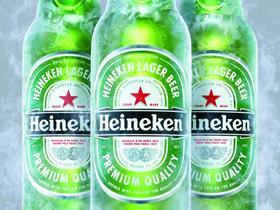
Heineken
Organic growth: 4.8%
Net margin: -0.1ppts
The brewer achieved the Global 50’s highest organic growth rate and has achieved volume as well as pricing growth. It has shifted focus from Western Europe to higher growth emerging markets via acquisitions.

BAT
Organic growth: N/A (total growth of 12.6%)
Net margin: +2.4ppts
Constant currency growth of 6.9% shows strong underlying performance. The acquisition of Reynolds has created the largest global tobacco firm, but NPD in e-cigs has also been key.
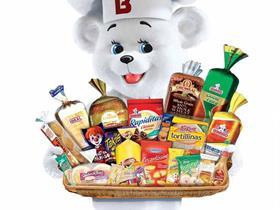
Grupo Bimbo
Organic growth: N/A (total growth of 15%)
Net margin: +0.9ppts
The globe’s biggest bakery has defied a structurally challenged category to achieve top and bottom line progress. Domestic sales rose 8% due to lower raw material costs and efficiencies.
● Follow this link for in-depth company profiles of the top performers
On a basic level, the growing pre-eminence of the 3G ethos has been driven by the anaemic top-line growth the globe’s biggest fmcg players continue to churn out.
The OC&C Strategy Consultants/Grocer Global 50 rankings show the prospect of sustainable industry growth is further away than ever as headline revenues across the world’s 50 largest fmcg companies fell last year. Top-line growth had been at a healthy 7.3% back in 2011, but had slumped back to just 0.3% in 2015 before going negative to -0.7% in 2016.
While currency movements and asset disposals have impacted these figures, organic revenue growth is also slowing down, dropping from 3.4% to 2.6% across those companies that split out internal sales growth.
The industry is still trying to get to grips with the same fundamental challenges that have strangled sales growth - fragmenting consumer demand, a changing retail landscape, insurgent smaller rivals and troubled economic conditions in former emerging market growth drivers like Brazil.
“There has not been a great deal of progress on really addressing the fundamental challenge of how these businesses get back to growth,” says OC&C’s head of consumer goods Will Hayllar. This new market environment is particularly harsh for food and non-alcoholic drinks brands, which last year saw a local currency sales decline of 2.5% compared with -1.4% in household and personal care, -0.6% in beer and spirits and a 4.9% revenue increase in tobacco (see box p25).
There is often more scope to add value in non - food consumer businesses. Says Rothschild ’s global head of consumer Akeel Sachak. The globalisation of many non - food categories is far less advanced and there is often more scope for premiumising as consumers are spending a large share of their wallet on personal care and home care relative to food.”
Overall volume growth of 0.4% remains significantly below global population growth of 1.1%, and price growth of 1.4% across the Global 50 constituents that split out the figure is no better than moderate.
Where investors have more cause for cheer is the progress in the Global 50’s bottom line performance. Gross margin across the 50 increased by 1.1 percentage points to 46%, continuing the trend of incremental margin increases year on year since a figure of 43.4% in 2010.
Food and drink sales might be stagnating, but margin performance compares robustly to the rest of fmcg. While the category’s margins are lower at 36.1%, the one percentage point increase is a faster rate of growth than the 0.6ppt increase to 56.5% in beer & spirits and the 0.8ppt increase to 62.2% in tobacco. So is this proof of concept for the 3G Capital cost-cutting, zero-based budgeting model? Not so fast.
Firstly, underlying EBITDA margins, stripping out exceptional costs and gains, were at 17% - slightly up on 16.6% last year but below the figures of 17.2% and 17.1% in 2014 and 2013 respectively.
Secondly, margins were boosted by lower average commodity prices in 2016, which OC&C’s Hayllar says were “the biggest driver” of last year’s profit margin increase. The deflationary commodity market of 2016 has turned again in 2017 as the price of many commodities rises, meaning this margin boost is likely to be temporary.
So there is scant evidence so far that companies are slashing their way to prosperity, but the influence of the zero-based budgeting model is undeniable.
3G has delivered industry-leading margins at both AB InBev and Kraft Heinz, largely relying on aggressive and forensic cost control. The model has boosted margins at ABI and Heinz by 8ppts and 6ppts respectively, and their margins currently stand way out in front of their peers at 28.3% and 23.2%.
Snapshot: Who’s buying what?
Rothschild ’s Sachak points to a differentiation in approaches from the US and European players -noting the former ’s priorities has gained the upper hand. “US investors seem to be much more mesmerised by cash generation and margins and now you’re seeing European bellwethers being pilloried for not delivering high enough margins and generating enough cash while top-line growth has historically been the main investor preoccupation for these kinds of businesses.”
Jefferies analyst Martin Deboo concurs: “There has been a war going on among consumer goods investors between the 3G radicals and everyone else.”
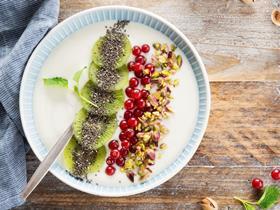
Danone
Target: WhiteWave Foods
Country: US
Value: $12.1bn
Danone upped its health and wellness credentials by snapping up the owner of Alpro. It was Danone’s biggest deal to date and immediately doubled its US revenues.

Asahi
Target: AB InBev Central and East Europe
Country: Czech Republic
Value: $7.8bn
Not content with Peroni and Grolsch, Asahi returned to AB InBev last year to snap up the SAB Miller Eastern European brands it was selling as a result of the megamerger.
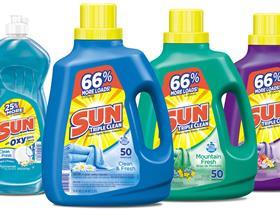
Henkel
Target: The Sun Products Corp
Country: US
Value: $3.6bn
German consumer group Henkel bolstered its presence in North America with the acquisition of Sun Products from Vestar Capital Partners.

Johnson & Johnson
Target: Vogue International
Country: US
Value: $3.3bn
Johnson & Johnson pulled off its first major piece of M&A since 2011 last year when buying haircare specialist Vogue. Vogue’s brands are exported to 38 markets.
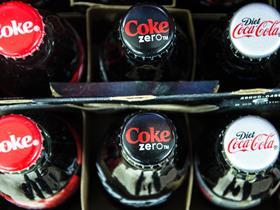
The Coca-Cola Company
Target: Coca-Cola Beverages Africa
Country: African markets
Value: $3.2bn
AB InBev continued its global sell-off of chunks of SAB Miller with the sale of its 54.5% stake in Africa’s largest Coke bottler to Coca-Cola.
● Follow this link for in-depth reports on mergers and acquisitions
The Kraft Heinz bid for Unilever was a watershed moment as - despite retaining support for independence - Unilever found itself forced to amend its USP from long-term sustainable growth to a more aggressive stance on margin. “What 3G has done with ABI and Kraft Heinz is create a lack of patience among investors generally,” says Liberum analyst Rob Waldschmidt.
Mixed results
The concept of zero-based budgeting - where every penny of expenditure must be justified each new budget period - has already been publicly implemented by 12 of the Global 50 in the past three years. But of the 10 non-3G backed companies to embrace ZBB, only five increased margins last year, while five - including Coca-Cola, Campbell and Diageo - saw margin erode further.
One issue here, according to Hayllar, is “inconsistent application”. 3G’s ZBB recipe is pretty brutal stuff - from aggressive job cuts, dramatic leadership changes, factory consolidations and resolutely performance-driven payments. There is a sense that some companies want to be seen to be doing the right thing on cost, he says, rather than rigorously applying ZBB.
Even within 3G’s world, results are mixed. AB InBev has delivered solid organic growth, though it has suffered from the downturn in Brazil, while maintaining sales and marketing spend. Its Restaurant Brands International has also grown ahead of rivals and is aggressively internationalising the business.
However, Kraft Heinz is significantly underperforming its peers, growing at just 1.9% organically per year from 2011-2016 compared with 5% and 4.7% for under-pressure Nestlé and Unilever respectively.
Despite its growing prevalence, ZBB is no silver bullet. Fundamental culture change of this nature is costly and complex to implement - particularly to larger multinationals with distinct operating divisions - and can be disruptive, hit innovation and customer experience, and ultimately hamper future growth.
“The jury is still out on whether zero-based budgeting is a way to grow,” says Michael Collinson, MD of European consumer and retail at William Blair investment bank. “It is something that makes sense in a low growth environment, but there is a big question over whether you can consistently grow the top line by consistently spending marketing money in a smarter way rather than actually spending more money.”
Liberum’s Waldschmidt suggests ZBB has become “a bit of a catch all term” for cost cutting and “can be good or bad depending on how you implement it”. “It can focus the mind on how to restructure activity and make it more efficient and less costly… and frees money to reinvest behind the top line,” he argues.
Certainly, at ABI its ZBB principles have helped support marketing spend by making efficiencies in other areas of the business, meaning marketing as a percentage of sales is 17% compared with 13.6% at Heineken and 9.9% at Carlsberg. Hayllar describes ZBB as “tool rather than a solution. It has worked better where businesses have got a clear route to drive value creation.”
In this sense, putting money behind ABI’s premiumisation strategy or Burger King’s internationalisation can drive sales and profits together, but Kraft Heinz without an obvious growth strategy may well find wholesale cuts strangle incremental sales growth.
“In businesses in more complex categories and regions where the growth vector is less clear cut, I think it is harder for ZBB to have an impact and frankly it is more likely to cut off future growth,” says Hayllar.
And despite this growing focus on the bottom line, long-term growth cannot be relegated to window dressing. “I do question the long - term sustainability of businesses that aren’t achieving underlying volume and value sales growth” warns Sachak. “There are real questions over how large consumer companies assure their long - term sustainability in terms of delivering growth when the public markets apply short - term pressure to grow profitability and generate cash.”
He adds the fundamental growth challenges facing the industry have intensified further with Amazon’s prospective buyout of Whole foods Market in what is “probably the retail environment’s most seismic change ever”.
Amazon’s act of war against the traditional bricks and mortar retailers is likely to tilt the balance of power in grocery towards online and means producers have to make their brands even more relevant to consumers - a demand /pull model rather than supply/push. “If consumers are not actively choosing to seek out your brands, you’re in trouble because you can’t rely on visibility in the shopping aisles and traditional promotion methods to shift your products to the extent you could historically,” Sachak concludes
There is some evidence those giants that have strategically invested in their brands are beginning to differentiate themselves in a low-growth market. PepsiCo has posted solid organic growth largely through product diversification into healthier ranges and channel mix, Nestlé has ramped up e-commerce, and Unilever has launched new premium products and instigated innovative routes to market in rural geographies.
Investing in growth
A number of Global 50 players are also committing significant resource to e-commerce and organically revamping their product portfolios to meet changing consumer behaviours and premiumisation opportunities. Inevitably not all initiatives have worked – including the failure of Diageo’s luxury e-commerce platform Alexander & James and P&G’s struggles with e-commerce – but these investments are moving the dial on growth when overall growth is flat-lining.
“In a low growth environment what is happening at the margin makes a big difference,” says William Blair’s Collinson. “It is not necessarily the case that a large proportion of sales are disappearing, but if companies want to grow at 3%-4% each year then losing 2-3% to new products or innovations that can’t be done in-house really matters.”
The Global 50 report shows 9% growth in Diageo’s premium Reserve brands constituted 33% of overall organic revenues growth, while Nestlé’s 11% premium growth also drove a third of its entire sales increase.
Similarly, Mondelez and Nestlé (excluding Nespresso) have growth e-commerce revenues by 30-50% over 2016, which can add an extra 1-2 percentage points of organic growth despite the relatively small proportion of overall sales.
“There are businesses making serious efforts to embrace the challenges major players in this sector face and that they need to pursue new strategies to be confidence of being successful and growing over the long-term,” Hayllar says. “The scale of impact these initiatives are having on these big businesses and the effect on the top line can be quite significant.”
Culturally multinational consumer giants have not always proved to be a hive of nimble innovation and buying up ready-made smaller premium competitors remains on-trend – including Unilever’s acquisition of ice cream brands Talenti and Grom, Beam Suntory snapping up Sipsmith Gin and General Mill’s buying Annies Homegrown.
Collinson explains: “It is not the case that these large companies are unable to innovate and or are unduly focussed on their existing businesses, but you can’t be everywhere at once – it’s a pretty dynamic environment and what works and what doesn’t is hard to predict.”
Economic instability
While bolt-on acquisitions remained the M&A route of choice last year, the widely anticipated industry consolidation - particularly in food - failed to materialise.
This was not for a lack of trying on Kraft Heinz’s behalf, but M&A activity in 2016 was at its lowest in terms of both volume and deal value since the post-crash slump from 2009-2011. Just 41 Global 50 deals were completed last year, for $50bn, compared with 51 deals in 2015 worth $226bn, given the SAB Miller and Kraft buyouts. Outside the Global 50, deal volumes and values were also down, suggesting the geopolitical and potential economic instability surrounding Brexit and the election of Donald Trump spooked the market.
There has been an uptick in activity in 2017, notably the announcements of large food divestments from Unilever and Nestlé, and Reckitt Benckiser’s $17.9bn Mead Johnson deal. And certainly the tobacco sector has seen the widespread consolidation that food has not in recent years, with British American Tobacco, Japan Tobacco and Imperial Brands all active consolidators.
But Rothschild’s Sachak warns consolidation in low-growth sectors is not necessarily desirable: “You don’t magically turn ex-growth companies into a growth platform just by putting them together. Once you remove the costs you end up with a very large, cash-generative and high margin business that is still ex-growth. That will eventually catch up with you.”
Once more, this returns to the crucial issue of long-term growth versus shorter-term investor returns. Cutting costs - even sustainably - is not an answer to the fundamental questions being posed to global fmcg players. The consumer world is rapidly changing and global brands need to proactively develop business models and products that reflect these seismic shifts in consumer behaviour and retail channels. Zero-based budgeting does not preclude vital strategic investment but it is necessarily more concerned with the present than the future.
The jury may still be out on whether a company is able to cut its way to success. But there is no doubt that - unless undertaken as part of a focused strategic plan - companies can cut themselves into irrelevance.
Snapshot: Tobacco - a success story against the odds
It comes as little surprise that tobacco is again the standout performer in the fmcg universe, matching its sky-high margins with strong revenue growth in the past 12 months.
Weighted average sales growth of the Global 50’s tobacco players was 4.9% against 0.7% overall decline, while EBITDA margin growth was 1.8ppts compared with 0.5ppts for the whole sector.
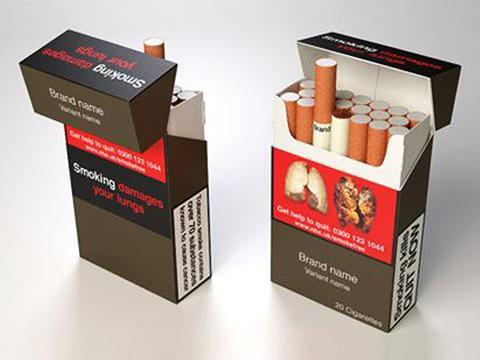
One of the enduring features of the fmcg sector is how tobacco churns out massive investor returns - and sales growth in four of the six Global 50 groups - despite an ever-tightening regulatory environment and collapsing volumes in their traditional markets.
“There are pockets of growth in the Middle East, Asia and Africa, but overall cigarette volumes are down everywhere,” says Moody’s tobacco analyst Ernesto Bisagno. “The key to the tobacco industry’s performance is that declining volume has been more than offset by pricing and product mix.”
Ernesto adds that tobacco uniquely enjoys very low elasticity products - due to the addictiveness of nicotine - and the regular duty increases give the platform for tobacco companies to push through price rises.
However, OC&C’s Will Hayllar thinks there are lessons the wider industry can learn from tobacco’s successful navigation of falling volumes and tightening regulation.
“It does show that if you’ve got a structural volume decline, then the best way of thinking about your top line is to look at pricing and premiumising products,” he says, pointing to the alcoholic drinks suppliers trying to drive customers up the revenue curve.
Additionally, the tobacco companies have reacted with some urgency so as not to be outmanoeuvred by changing consumer trends, and have invested significant sums in next generation tobacco products. “If that shift is happening anyway you are better off potentially cannibalising your core sales to retain and protect your business in the longer term,” Hayllar says.
● Follow this link for more analysis on how the tobacco industry bucks the trend
Global 50 rankings

Downloads
OCANDC Global 50 Download NEW
PDF, Size 0.54 mb
OC&C Global 50 2017: Can zero equal hero?
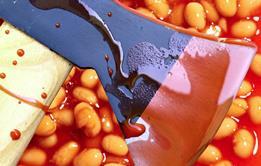
Is zero-based budgeting (ruthless cost cutting) the required method for boosting margin now?
 Currently
reading
Currently
reading
OC&C Global 50 2017: Can zero equal hero?
- 2
- 3
- 4
- 5
- 6
- 7






















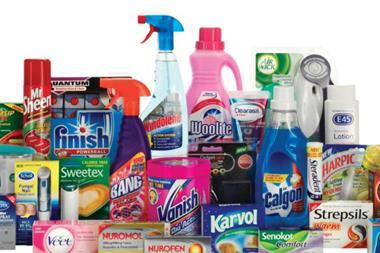

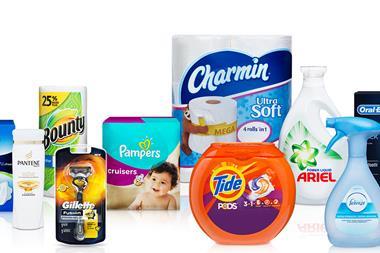

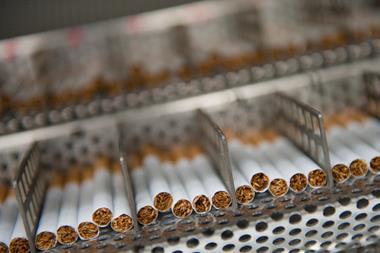






No comments yet